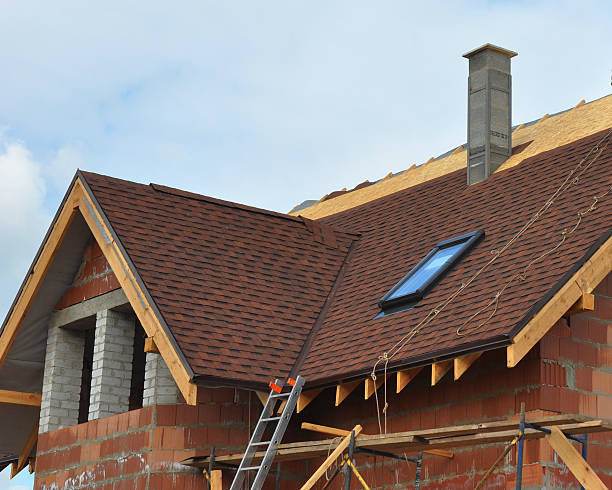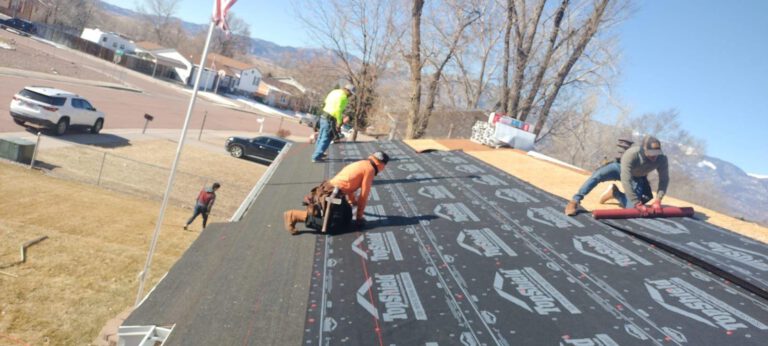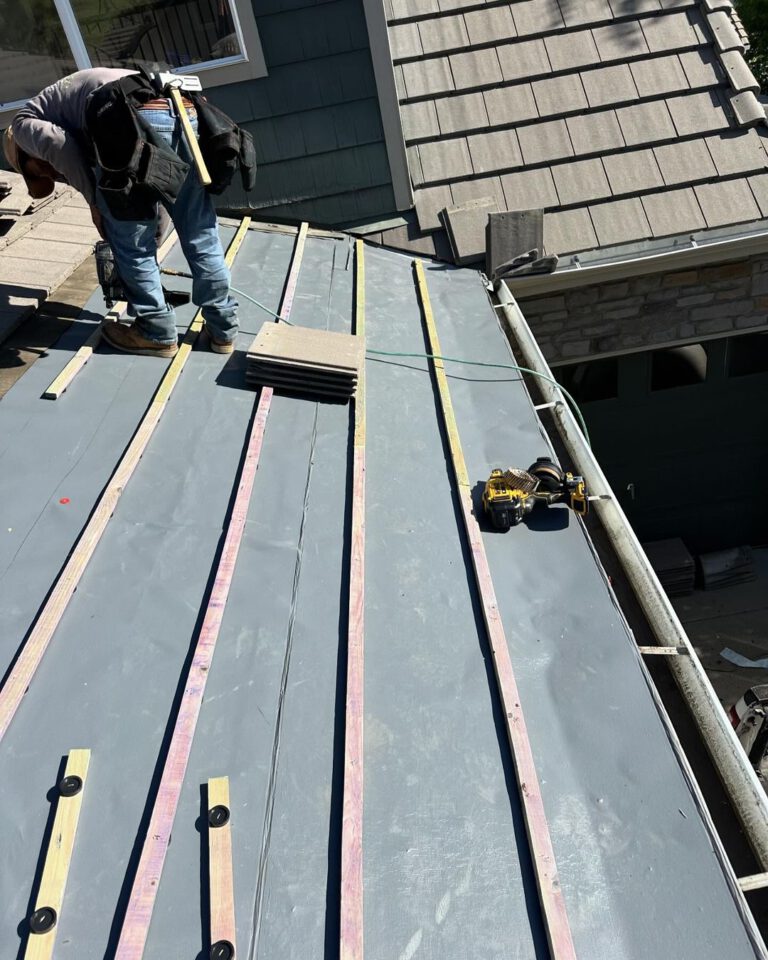If you’re living under your roof, it’s unavoidable that you may run into some trouble in the future. There are a lot of problems that may suddenly arise such as leaks and missing shingles.
In this article, we will be running through the roofing problems that homeowners should be aware of. We’ll also provide tips on how to address these problems if they do occur.
First off, let’s know what a roof is
What is a roof?
A roof is a covering that sits on top of a building. It is the highest part of the building, and it protects the rest of the structure from inclement weather. The word “roof” comes from the Old English word “rof,” which means “the uppermost part of anything.”
Roofs are an essential part of any building, and they come in many different styles. The most common type of roof is a pitched roof, which has slopes and ridges that allow rainwater and snow to run off. Flat roofs are also popular, especially in hot climates where they can help keep cool air in and hot air out.
The materials used to build a roof also vary depending on the climate and the style of the building. In cold climates, roofs are often made of wood or metal so that they can withstand heavy snowfall. In hot climates, roofs are usually made of materials that reflect heat, such as tile or asphalt.
What are the different parts of a roof?
The three main parts of a roof are the rafters, the trusses, and the sheathing. The rafters are the beams that support the roof. The trusses are triangular structures that add strength to the rafters. The sheathing is a layer of material (usually plywood) that covers the rafters and trusses.
The four other parts of a roof include:
-The ridge: The highest point of the roof, where the rafters and trusses meet.
-The eave: The edge of the roof that extends beyond the side of the building.
-The gable: The triangular section at the end of a pitched roof.
-The hip: The intersection of two sloping sides of a roof.
There are many different types of roofs, to name a few we have:
Pitched Roofs
Pitched roofs are the most common type of roof. They have slopes and ridges that allow rainwater and snow to run off. Pitched roofs are typically made of wood or metal, which makes them very durable.
Pitched roofs come in many different styles, such as gable, hip, and gambrel. Gable roofs have a triangular shape at the end of the roof. Hip roofs have two sloping sides that meet in a ridge at the top of the roof. Gambrel roofs look like barn rooftops and have two levels of slope on each side.
Pitched roofs are ideal for cold climates because they can withstand heavy snowfall. However, they can also be used in hot climates if they are made of materials that reflect heat, such as tile or asphalt.
Flat Roofs
Flat roofs are also popular, especially in hot climates where they can help keep cool air in and hot air out. Flat roofs are typically made of materials such as tar, gravel, or asphalt.
One advantage of flat roofs is that they are easier to build than pitched roofs. However, flat roofs are not as durable as pitched roofs and they require more maintenance.
Flat roofs are a good choice for hot climates because they reflect heat and keep the building cooler. They are also a good choice for buildings with limited space, such as garages or sheds.
Green Roofs
Green roofs are a type of flat roof that is covered with vegetation. Green roofs can be used to grow plants, reduce stormwater runoff, and improve air quality.
Green roofs are a good choice for eco-friendly buildings. They can help reduce your carbon footprint and save energy by keeping the building cooler in the summer.
Installing a green roof can be expensive, but it will save you money in the long run by reducing your energy costs.
Now you may be wondering, just how important is your roof?
As we mentioned before, the roof is a very essentialofrt for every building. It protects the building itself and everything inside. You might be wondering, if is it hard to maintain a roof, depending on the type of roof. Pitched roofs, for example, are typically easy to maintain because they are made of durable materials that can withstand the elements. Flat roofs, on the other hand, require more maintenance because they are not as durable. Green roofs also require more maintenance than other types of roofs because the vegetation needs to be watered and trimmed regularly.
Maintaining your roof is important because it protects your home or business from weather damage. A well-maintained roof can also save you money on energy costs by keeping cool air in and hot air out.
So what are the common roof problems that you should know?
Leaks
Leaks can be caused by many factors, such as holes, cracks, or missing shingles. If there are any indications of leaks, it’s important tthemget it fixed immediately to avoid further damage.
Leaks can be fixed by patching the hole or replacing the damaged shingle. You should also check for any other damage, such as rot or mold, and have it repaired before it gets worse.
If you have a leaky roof, the first thing you should do is try to find the source of the leak. Once you’ve found the source of the leak, you can then decide whether you need to patch the hole or replace the damaged shingle.
Storm Damage
Another common roof problem is storm damage. Storms can cause damage to your roof by causing shingles to blow off, breaking branches, or bringing debris down on your roof. If you live in an area that is prone to storms, it’s important to have your roof inspected regularly to ensure that it is in good condition.
Storm damage can be repaired by replacing missing shingles or repairing damaged areas. You should also have any broken branches removed from your roof and make sure debris on your roof could cause further damage.
If you have storm damage, the first thing you should do is contact a roofing contractor for an inspection. They will be able to assess the damage and recommend the best course of action.
Ice Dams
Another roof problem that is common in cold climates is ice dams. These form when the snow melts and then refreezes, creating an obstruction that makes it hard for water to drain properly.
Ice dams can be prevented by making sure that your roof is properly insulated and ventilation is adequate. You should also keep gutters clear of debris so that they can drain properly.
If you already have an ice dam, you can try to remove it yourself with an ice pick or a heat gun. If you’re not comfortable doing this, you can always contact a roofing contractor for help like roofers in Colorado Springs! They will ensure that you will not be bothered by any roofing problems again!
Algae growth
Algae growth is a common roof problem in warm, humid climates. Algae thrive in warm, moist environments and can cause streaks or discoloration on your roof. While algae are not damaging to your roof, they can be unsightly.
Algae can be removed with a pressure washer or a chemical cleaner specifically designed for roofs. You should also make sure that your roof is properly ventilated to prevent algae from growing back.
If you have algae on your roof, the first thing you should do is try to remove it yourself with a pressure washer or chemical cleaner. If you’re not comfortable doing this, you can always contact a roofing contractor for help.
Poor ventilation
Poor roof ventilation can cause a variety of problems, such as mold growth, ice dams, and condensation. Adequate roof ventilation is important in all climates to keep your roof in good condition.
There are a few things you can do to improve roof ventilation, such as installing ridge vents or soffit vents. You should also make sureno obstructions are blockingocking the flow of air through your vents.
If you have poor roof ventilation, the first thing you should do is try to improve it yourself by installing ridge vents or soffit vents. If you’re not comfortable doing this, you can always contact a roofing contractor for help.
These are just a few of the most common roof problems that you should be aware of. By being proactive and getting your roof inspected regularly, you can avoid these problems and keep your roof in good condition. If you do have a roof problem, don’t hesitate to contact a Colorado Springs roofing contractor for help.




